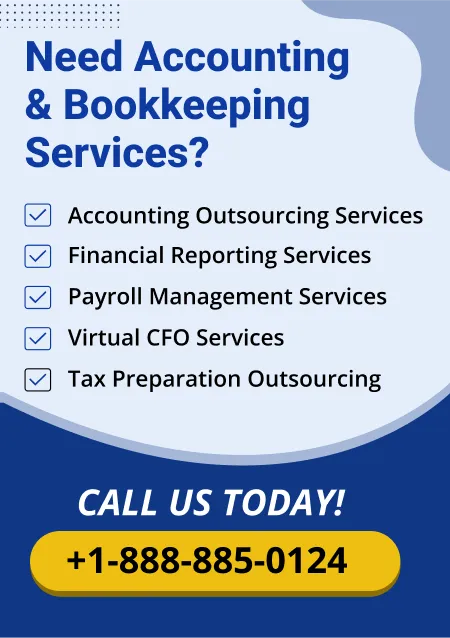Financial literacy is a journey. By mastering the basics of financial statements, small business owners can build a solid foundation for sustained growth and success. Make it a habit to dive into your financial statements regularly, and don’t hesitate to seek professional advice when needed. Your business’s future depends on it.
Financial statements are the bedrock of a business’s financial health. They offer crucial insights into a company’s performance and position, enabling business owners to make informed decisions. For small business owners in the USA, understanding these statements is vital for managing operations, securing financing, and planning for the future. This comprehensive guide will explain the key components of financial statements and how to interpret them.
The Balance Sheet: A Snapshot of Your Business’s Financial Position
Purpose: The balance sheet provides a snapshot of your business’s financial position at a specific point in time. It lists your assets, liabilities, and equity, offering a clear picture of what the business owns and owes.
Components:
- Assets: Resources owned by the business.
- Current Assets: These are short-term assets that can be converted into cash within a year, such as cash, accounts receivable, and inventory.
- Non-Current Assets: Long-term investments that are not easily converted into cash, such as property, plant, and equipment (PP&E), and intangible assets like patents.
- Liabilities: Obligations the business needs to pay back.
- Current Liabilities: Short-term obligations due within a year, such as accounts payable, short-term loans, and accrued expenses.
- Long-Term Liabilities: Obligations due after a year, including long-term loans and bonds payable.
- Equity: Also known as owner’s equity or shareholder’s equity, this represents the residual interest in the assets of the business after deducting liabilities. It includes retained earnings and contributed capital.
Key Equation: Assets=Liabilities+Equity
Interpreting the Balance Sheet:
- Liquidity Analysis: Assess your company’s ability to meet short-term obligations by comparing current assets to current liabilities (Current Ratio).
- Solvency Analysis: Evaluate your company’s long-term financial stability by examining the proportion of debt in the capital structure (Debt-to-Equity Ratio).
The Income Statement: Understanding Profit and Loss
Purpose: The income statement, also known as the profit and loss statement, shows your company’s financial performance over a specific period. It details revenues, expenses, and profits or losses.
Components:
- Revenue: The total income generated from the sale of goods or services. It’s also known as sales or turnover.
- Expenses: Costs incurred to generate revenue. Expenses are typically classified into cost of goods sold (COGS), operating expenses, and non-operating expenses.
- Cost of Goods Sold (COGS): Direct costs attributable to the production of goods sold, such as raw materials and labor.
- Operating Expenses: Indirect costs related to the running of the business, including rent, utilities, and salaries.
- Non-Operating Expenses: Costs not directly related to the main business activities, like interest and tax expenses.
- Net Income: The profit or loss after all expenses are deducted from revenue. It’s an indicator of the company’s profitability.
Key Equation: Net Income=Revenue−Expenses
Interpreting the Income Statement:
- Profitability Analysis: Assess your company’s ability to generate profit by looking at metrics like gross margin, operating margin, and net profit margin.
- Expense Management: Analyze expense categories to identify areas where costs can be controlled or reduced.
The Cash Flow Statement: Tracking Cash Inflows and Outflows
Purpose: The cash flow statement provides insights into your company’s cash inflows and outflows over a specific period. It’s divided into three sections: operating activities, investing activities, and financing activities.
Components:
- Operating Activities: Cash flows from core business operations, including cash received from customers and cash paid to suppliers and employees.
- Investing Activities: Cash flows from the purchase and sale of long-term assets, such as property and equipment, as well as investments in other businesses.
- Financing Activities: Cash flows related to financing the business, including cash received from issuing debt or equity and cash used to pay dividends and repay loans.
Interpreting the Cash Flow Statement:
- Cash Flow from Operating Activities: Indicates your company’s ability to generate cash from its core operations. Positive cash flow is a sign of a healthy business.
- Cash Flow from Investing Activities: Reflects your company’s investment strategy. Negative cash flow may indicate significant investment in growth, while positive cash flow might suggest asset liquidation.
- Cash Flow from Financing Activities: Shows how your company is financed. Positive cash flow indicates capital raising through debt or equity, while negative cash flow may suggest debt repayment or dividend distribution.
Statement of Retained Earnings: Tracking Profit Reinvestment
Purpose: The statement of retained earnings explains changes in retained earnings over a specific period. It shows how much of the profit is reinvested in the business and how much is distributed to shareholders as dividends.
Components:
- Beginning Retained Earnings: The retained earnings balance at the start of the period.
- Net Income: The profit earned during the period, added to retained earnings.
- Dividends Paid: The portion of profit distributed to shareholders, subtracted from retained earnings.
Key Equation: Ending Retained Earnings=Beginning Retained Earnings+Net Income−Dividends Paid
Interpreting the Statement of Retained Earnings:
- Reinvestment Strategy: High retained earnings indicate reinvestment in the business for growth and expansion.
- Dividend Policy: Regular dividend payments may attract investors but could limit funds available for reinvestment.
Tips for Small Business Owners
Some important tips are mentioned below
Regular Review
- Frequency: Regularly review financial statements to track performance, identify trends, and make timely decisions.
- Comparative Analysis: Compare financial statements against previous periods and industry benchmarks to gauge performance.
Seek Professional Help
- Accountants: Hiring a professional accountant can ensure accurate preparation and interpretation of financial statements.
- Software: Utilize accounting software to automate financial reporting and reduce errors.
Financial Ratios
- Profitability Ratios: Assess the company’s ability to generate profit (e.g., gross margin, net profit margin).
- Liquidity Ratios: Measure the company’s ability to meet short-term obligations (e.g., current ratio, quick ratio).
- Solvency Ratios: Evaluate the company’s long-term financial stability (e.g., debt-to-equity ratio, interest coverage ratio).
Use Financial Data for Planning
- Budgeting: Use historical financial data to set realistic budgets and financial goals.
- Forecasting: Predict future trends based on past performance and market conditions to guide strategic decisions.
Common Mistakes to Avoid
- Mixing Personal and Business Finances: Keep personal and business finances separate to maintain clear and accurate financial records.
- Ignoring Cash Flow: Regularly monitor cash flow to ensure the business has enough liquidity to meet its obligations.
- Overlooking Small Transactions: Track all transactions, no matter how small, to maintain accurate records.
- Failing to Reconcile Accounts: Regularly reconcile bank statements and financial records to identify and correct discrepancies.
The Importance of Each Statement
Each financial statement serves a unique purpose and provides different insights into your business:
- Balance Sheet: Offers a snapshot of the company’s financial position at a specific point in time, helping you understand what your business owns and owes.
- Income Statement: Provides a summary of the company’s financial performance over a period, highlighting profitability and expense management.
- Cash Flow Statement: Tracks the cash inflows and outflows, crucial for understanding liquidity and cash management.
- Statement of Retained Earnings: Shows how profits are reinvested or distributed, helping you make decisions about reinvestment and dividends.
Using Financial Statements to Make Informed Decisions
Financial statements are not just for compliance or tax purposes. They are powerful tools for decision-making. Here are some ways to use them effectively:
- Strategic Planning: Use insights from financial statements to develop long-term strategies and set realistic goals.
- Performance Monitoring: Regularly review financial statements to monitor the performance and health of your business, ensuring you stay on track.
- Investment Decisions: Analyze financial statements to make informed decisions about investing in new projects, equipment, or other businesses.
- Loan Applications: Lenders often require financial statements to assess the creditworthiness of your business. Well-prepared statements can improve your chances of securing financing.
Conclusion
Understanding financial statements is crucial for small business owners in the USA to effectively manage their operations and plan for future growth. By regularly reviewing the balance sheet, income statement, cash flow statement, and statement of retained earnings, business owners can gain insights into their company’s financial health. Seeking professional help, using financial ratios for analysis, and leveraging financial data for planning can further enhance financial management. Avoiding common mistakes and staying vigilant with financial practices will ensure better decision-making and long-term success for small businesses.
Read Also A Beginner's Guide to Financial Statements

























